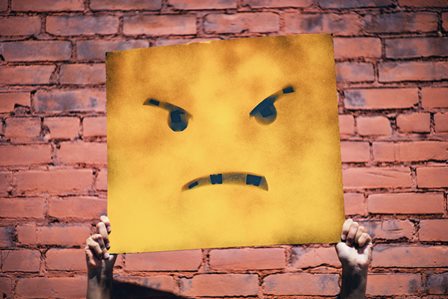
Photo by Andre Hunter on Unsplash
Negative social media content has increased substantially this year due to Covid-19 and rising political animosity, dramatically increasing risks to brands, according to new research.
“Coupled with increased societal issues and instigators, such as trolls, harassers, activists, and sophisticated bad actors, this already-complex landscape has seen a boost in harmful and toxic content, creating a potentially disastrous scenario for brands,” states new research from Crisp. “As the spread of harmful content increases, so does the risk for brands.”
The harmful content spreads like a California wildfire and includes inappropriate comments about Black Lives Matter, inequality and discrimination. Harmful content can transform a small incident into a business-critical issue within hours, or even minutes.
Social Media Advertising Presents New Risks
As brands expand their social media advertising efforts, the ads also pose brand reputational dangers – possibly to the surprise of PR and marketing managers. If left unmonitored, the ads can attract negative comments, increasing reputational risks.
According to the research, one in five harmful content topics originated from the comments section of brands’ social media ads. Additionally, 38% of respondents say they have seen offensive or derogatory content on a brand’s owned social media page.
The research also shows that:
68% of respondents have seen a significant increase in negative commentary on brand-owned social media pages.
22% admit sharing negative comments or content about a brand only to find out later they are untrue.
63% say brands should address inappropriate or harmful content within an hour.
60% say they are more likely to feel more skeptical towards organizations and their leadership due to the rise in false or harmful online comments.
72% have looked at the users’ comments on social media ads.
45% decided not to purchase an item when they saw a complaint about the item in its ad.
Woe to Those not Listening to Digital Chatter
The report underscores the necessity of employing social media listening. A media monitoring service that monitors both social and traditional media provides one of the most important tools for alerting organizations of an emerging PR crisis and determining how best to respond during a crisis.
“Legitimate conversation surrounding products and services can create issues for organizations not paying attention to the digital chatter,” the report states. “That digital chatter has gotten louder in recent months as people find their connections through social media.”
“While social media platforms have become places where an organization must pay for visibility, savvy communicators will also invest in monitoring and real-time response for as long as the ad is visible,” writes Ted Kitterman, an editor at PR Daily.
“If you do not have the resources to adequately monitor all of your social media pages, perhaps you should pare down and identify which channels will reach the largest number of your consumers—while still offering a reasonable workload for your brand management team,” Kitterman adds.
Bottom Line: Negative comments have spiked this year due to Covid-19 fears, social unrest and political animosity, increasing the chances that brands will suffer online attacks and reputational damage, new research shows. Because of those dangers, it’s more important than ever for brands to monitor social media and prepare to take swift responses.
Schedule a Free Online Demo of the Glean.info Media Monitoring & Measurement Dashboard

Michael Kling is manager of public relations, marketing and social media at Glean.info, a media monitoring and measurement service that provides customized media monitoring and PR analytics solutions.




